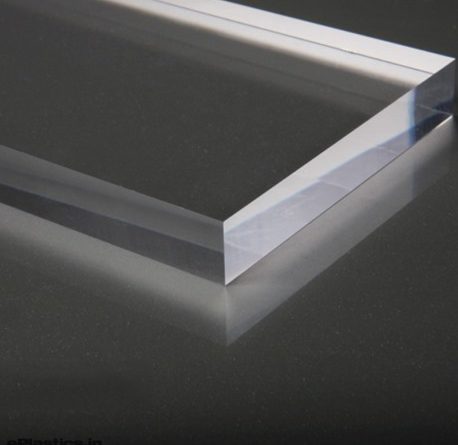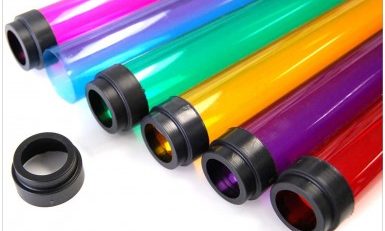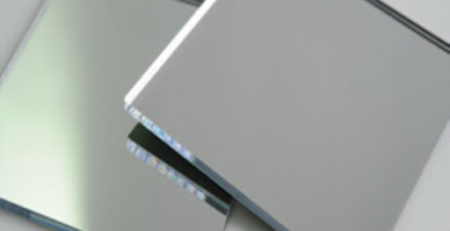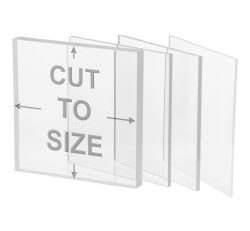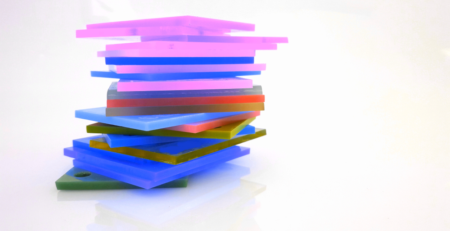Acrylic panels are sheets of acrylic that are usually rectangular or square. Oftentimes the terms acrylic panels and acrylic sheets are used interchangeably. They are often used for building signs, screens, windows, and more.
What are Cut-to-Size Acrylic/Plexiglass Sheets?
Commonly used for specific projects cut-to-size plexiglass acrylic sheets are custom cut sheets. The acrylic sheet is cut to your desired dimensions. Silk Road Trading Egypt Plastics offers cut-to-size clear and colored acrylic panels, allowing options to meet your precise specifications. Buying just what you need saves money on shipping and storage, eliminating waste.
Which Type of Plexiglass Panel Should You Choose?
-
Acrylic Cast Black Sheet
Black plexiglass is highly sought after in the fabrication of POP displays, various retail applications, and signage. It is a great choice for visual communication media, retail, furniture, and interior design, lighting, architecture and construction, and creative applications.
-
Acrylic Cast White Sheet
Cast white plexiglass is a great option for signage, displays, and lightboxes. Its white appearance will help your messages stand out. It is popularly used routinely across visual communication media, retail display and construction, furniture and interior design, architecture, creative applications.
-
Acrylic Cast Color Sheet
If you are looking for a range of colors or sizes to bring your project to life. Cast color plexiglass is a great way to go. You can choose from transparent, translucent, or fluorescent, in a variety of colors, thicknesses, and shapes.
-
Acrylic P95 Sheet
If you are looking for plexiglass that has been patterned on one side of the panel and polished on the other, P95 plexiglass may be the right one for you. It offers transparent clarity under backlighting, opening a range of creative expressions. You can apply it in decorative glazing, lighting, and skylights, privacy partitions, furniture, shelving, POP, retail, store fixture displays, and trade show and exhibition setups.
-
Acrylic Mirror Sheet
Acrylic mirror sheets are a great lightweight, impact and shatter-resistant option. Its flexibility makes it preferable to glass, and the range of colors available makes it an ideal material for multiple applications and industries, including see-through or surveillance mirrored acrylic panels.
-
Bullet-Resistant Acrylic Sheet
If you are looking for a cost-effective solution to creating safer environments, bullet-resistant acrylic is 30% less expensive than bullet-resistant polycarbonate and laminated glass. Moreover, Level 1 Bullet Resistant Plexiglass is approved by Underwriters Laboratories, Inc., UL, “protection is provided against complete penetration, the passage of fragments of projectiles, or spalling (fragmentation) of the protective material to the degree that injury would be caused to a person standing directly behind the bullet-resisting barrier.”
-
Acrylic Non-Glare Sheet
Non-Glare plexiglass panels are preferable for glazing and framing applications. At 10 times the strength and half the weight of glass, non-glare acrylic sheet lends itself to projects and applications where ease of fabrication and flexibility are crucial. Non-glare plexiglass is naturally resistant to UV light degradation making the loss of light transmission and yellowing minor rather than major concerns.
How to Care and Clean Acrylic/Plexiglass Sheets?
Acrylic without additives is naturally UV resistant. Some manufacturers will add stabilizers, which extend UV protection for prolonged exposure to UV radiation. When using these UV enhanced materials, take care to preserve their longevity by treating them with care. Ammonia, window cleaners, and other harsh cleaners can cause damage and may result in crazing. Acrylic sheets are a robust material requiring minimal maintenance. Should any adhesive or sticky substance come in contact with the surface, use ONLY products intended specifically for acrylic care and cleaning.
Is an Acrylic Sheet Flexible?
Although acrylic, also known as plexiglass or PMMA, is not the most flexible type of plastic, when it is compared to its glass equivalent, a plexiglass acrylic plastic sheet is very flexible and exhibits great resistance to breakage. As it becomes warm, it softens and can be bent or shaped. The typical forming temperature range of most plexiglass acrylic panels is 275°F to 350°F (135°C to 177°C). A consistent and controlled heat source is necessary so that a plexiglass acrylic sheet bends and is smooth. This flexible ability allows plexiglass acrylic sheets to have many uses including a replacement for glass windows, skylights, doors, partitions, and works great for point of purchase displays.
Can Acrylic Sheets Withstand Heat?
Plexiglass acrylic sheets can safely withstand heat up to the temperature of 176°F (80°C) before becoming more pliable. This provides plenty of heat resistance for outdoor environments. Plexiglass acrylic panels are classified as thermoplastics due to the way plastic responds to heat. Thermoplastics become liquid at their melting point 320°F (160°C), so they can be heated to this temperature, cooled, and reheated again without significant degradation. Instead of burning, plexiglass acrylic sheets will liquefy, thus allowing them to be easily injected, molded, and subsequently recycled.
Is an Acrylic Sheet Waterproof?
Plexiglass acrylic sheet possesses water-resistant properties that make it very suitable for outdoor use and have been commonly used for windows on submarines and cars. They also play a large role in construction, engineering, outdoor displays and signage, and even underwater camera lenses. They are even considered to be dishwasher safe when used as glass substitutes in dishware and kitchenware. Because of its water-resistant properties, plexiglass acrylic panels have a weatherproof nature and make a superior exterior shell for many products
Are There Different Types of Plexiglass Sheets?
Yes, there are 2 major types of plexiglass acrylic sheets, including cast and extruded. Listed below are the details of these two different types of manufactured acrylic plexiglass sheets.
Cast Plexiglass Sheet: This style of plexiglass acrylic is made by a process whereby MMA (methyl methacrylate monomer) liquid is pumped into a mold made from two sheets of glass. Cast plexiglass is the highest quality plexiglass acrylic and more expensive than extruded because it offers the best optical clarity, greater thermal stability, and higher chemical resistance to solvents. Cast plexiglass acrylic has a less consistent sheet thickness with up to +/-10% variation possible across the panel; it is thermo-formable and can be reworked hot, which is not always possible with extruded sheets.
Extruded Plexiglass Sheet: This style of plexiglass acrylic panels are made by semi-soft melted resin pushed between rollers and cut-to-size. Extruded plexiglass acrylic sheets have a higher tolerance when heated or bent and are typically more malleable than cast plexiglass acrylic sheets. It generally is the best thickness consistency, softest sheet, easy to glue, best for chemical bonding, and the standard material for displays, replacement windows, and some signage applications.
Is Polycarbonate the Same as Plexiglass?
Polycarbonate is not the same as plexiglass. While these two types of plastics are commonly compared to one another, they both have different benefits and drawbacks. Although they look similar, plexiglass acrylic is shinier, less expensive, and has a higher clarity than polycarbonate. Polycarbonate, on the other hand, has a higher level of impact resistance, can be drilled without cracking, and has a low level of flammability. Acrylic is more commonly used for POP displays, signage, light fixtures, and window panel replacements. Polycarbonate is more widely used as bullet-resistant glass, automobile windshields, and roofs for greenhouses. To learn more about these differences, check out our resource page comparing polycarbonate and acrylic.
Does Plexiglass Fade in the Sun?
Sunlight typically will not affect plexiglass acrylic items for many years. Since plexiglass acrylic is derived from natural gas and is completely inert in its solid form, it does not yellow as quickly from sunlight as other plastics. In fact, some advanced versions of plexiglass acrylic will not yellow at all.

